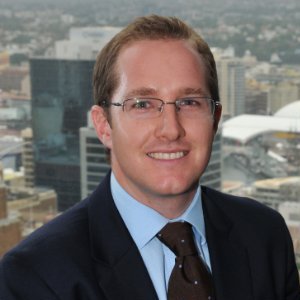Global flows nudge $2tn but Aussie banks rated ‘neutral’
by David Chaplin
The global managed funds industry reaped the largest harvest of inflows in a decade last year, according to a new Morningstar report, with passive vehicles the major beneficiary.
Overall net flows into “global open-end funds and exchange-traded products” hit almost US$2 trillion during 2017, more than double the US$835 billion recorded the previous year, the Morningstar ‘2017 Global Asset Flows Report’ says.
Fixed income funds experienced the highest net flows in 2017 attracting an estimated US$830 billion followed by US$580 billion in equity products, the study shows.
While slightly behind the world average, the Oceania region – principally Australia and NZ – saw net fund flows jump from US$10 billion in 2016 to US$17 billion the following year.
By the end of 2017 total net global funds under management (FUM) hit almost US$37.3 trillion, the report says, or about 23 per cent up on the US$30.3 trillion recorded 12 months earlier.
Despite seeing net FUM jump from US$751 billion to US$919 billion over the year to end of December 2017, Oceania had the lowest ‘organic growth’ level (2.2 per cent) of all regions in the Morningstar study.
Africa, the next-lowest region for organic growth – defined by Morningstar as “the estimated net flow over a period divided by beginning net assets” – hit 4.1 per cent while the ‘cross-border’ sector (a collective of 13 tax haven countries) saw the highest growth-rate of 13 per cent. (Excluding the statistically insignificant ‘other Europe’ region – comprising Russia, a host of former Soviet bloc countries, San Marino and Malta – that grew 20.6 per cent off a low base of $5 billion.)
“[Organic growth rate] is used extensively by the analyst community to gauge the health of asset-management firms and the industry as a whole,” the Morningstar study says.
As has been customary of late, index-style funds dominated fund flows across most regions and asset classes. Passive products now account for over 47 per cent of equity fund exposure in Asia, almost 45 per cent in the US and more than 33 per cent in Europe.
“In terms of flows, investors preferred passive equity vehicles across regions, with cross-border flows a slight exception. In fact, largely because of U.S. outflows, investors withdrew nearly $80 billion globally from actively managed equity funds. U.S. investors poured $470 billion into passive equity funds, while they pulled about $175 billion from actively managed equity funds, making it the only major region with active outflows,” the Morningstar report says.
“While no other region had active equity outflows, there was a sizable gap in demand in other regions. In Europe, the $103 billion collected by equity index funds more than tripled the $33 billion haul for such active funds. The story was similar in Asia, where passive equity products welcomed $58 billion in inflows versus $14 billion for such active vehicles.”
Indeed, passive products underpinned the record funds flows of the two top asset-gatherers in 2017 – BlackRock and Vanguard – which netted US$402 billion and US$384 billion, respectively, over the 12-month period. The positions were reversed in 2016 with Vanguard (US$318 billion in net flows) significantly outpacing BlackRock’s US$156 billion result.
BlackRock’s haul was propped up in 2017 by net flows of more than US$240 billion into its iShares exchange-traded funds (ETF) range
“These two behemoths continued to grow at the expense of their competitors,” Morningstar says. “Vanguard and BlackRock held a combined $7.5 trillion in mutual fund and ETF assets at the end of 2017. That’s nearly equal to the $7.9 trillion of assets managed by their eight largest competitors combined.”
Among the competitors only the fixed income giant PIMCO achieved net flows above US$100 billion while T Rowe Price and Franklin Templeton saw net outflows for consecutive years.
Morningstar based its findings on data covering 4,000 “fund groups” covering 95,000 underlying portfolios housed in 85 jurisdictions.
Royal Commssion impact on Aussie funds
Also last week, the researcher’s Asia-Pacific director of manager research ratings, Chris Douglas, published an overview of the ‘Big Five’ institutionally-owned Australian fund management firms post the Royal Commission revelations.
Douglas notes the parent entities of the fund five groups – AMP plus the four major Australian banks – have a strong influence on the Morningstar investment ratings.
Bar ANZ, which has sold its Australian wealth management business, Morningstar rates the parental input of the other four institutions as ‘neutral’.
“Some of these firms have struggled to establish a distinct culture given the large shadow that looms over them from the broader group,” he says in the note. “In our view, the captured distribution via aligned networks can breed complacency and bureaucracy which makes it difficult to attract and retain staff. “To put it more bluntly, they have suffered from legacy fund structures, periods of high staff turnover, above-average fees, and mediocre performance.”
Despite the parent problems, Douglas says there are many excellent investment options offered across the funds management firms in question.
“… some of these funds have very talented and established investment teams, time-tested processes, and track-records that stand above their peer group,” he says.
Given that three of the big four banks – ANZ, Commonwealth Bank of Australia and National Australia Bank – either have or plan to exit wealth management soon, both industry and investors face a “very disruptive time”.
“But no matter the ownership structure, there needs to be a clear focus on the client. And this comes down the culture of the firm and how they create, distribute, and sell products,” Douglas says. “There needs to be less of a focus on selling and more of a focus on creating value. And that’s the importance of stewardship.”
– Investment News NZ










